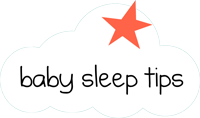Instructions for safe infant sleep
Updated recommendations of the American Academy of Pediatrics for the sleep of infants
Many infants dying from Sudden Infant Death Syndrome (SIDS) die due to an unsafe sleep environment. Some of these deaths are from entrapment, suffocation, or strangulation of the child. However, there are ways for parents to keep their sleeping baby safe.
Parents, as well as anyone else who takes care of babies (grandmothers, grandfathers, other members of the family, friends, babysitters, child care centers) should be aware of the following information, which arose in October 2011, as recommendations of the AmericanAcademy of Pediatrics in relation to the sleep of infants.
Parents can do the following:
1. Place their baby to sleep ON ITS BACK, with its back to the mattress, FOR EVERY SLEEP. Babies up to 1 year of age should always be placed on their backs to sleep, during naps and at night. For a healthy, normal infant, sleeping on the side is more dangerous than sleeping on its back. Don't use wedges for infant sleep in order to put them in a lateral position. However, if your infant has rolled from its back to its side or stomach on its own, it can be left in that position if it has reached the developmental age during which it can turn on the side or on its tummy (usually after the first 3-4 months of life). If your baby falls asleep in a car safety seat, stroller, sling or the rocking chair, it should be moved to a firm sleep surface as soon as possible.
2. Infants should be placed on a firm, hard sleep surface while sleeping. All cribs, portable cribs etc should meet current safety standards. Check to make sure the product has not been recalled. Do not use a crib that is broken or missing parts. Cover the mattress that comes with the product with a fitted sheet. Do not put blankets or pillows between the mattress and the fitted sheet. Never put your infant to sleep on a chair, sofa, water bed or cushion.
3. Keep soft objects, loose bedding, or any objects that could increase the risk of entrapment, suffocation, or strangulation out of the crib. Pillows, quilts, stuffed toys, bumper pads can cause your baby to suffocate. Most experts agree that after 12 months of age these objects pose little risk to healthy babies. Bumper pads, which are placed on the rails of the crib, should not be used before 12 months of age.
4. Place their baby to sleep IN THE SAME ROOM WHERE THEY SLEEP but not the same bed. Keep the crib within an arm's reach of your bed, so that you can easily reach the child with your hand. You can easily watch or breastfeed your baby by having it nearby. This instruction is valid for at least the entire first year of your baby. There is no scientific recommendation urging parents to move the baby to its own room after the first weeks or months of its life.
5. BREASTFEED AS EXCLUSIVELY AND FOR AS LONG AS POSSIBLE. Studies show that breastfeeding your baby can help reduce the risk of SIDS.
6. Make sure that your baby receives immunizations according to the Recommended Vaccination Program. Recent evidence suggests that immunizations may have a protective effect against SIDS.
7. Keep your baby away from smokers and places where people smoke. If parents smoke, they should try to quit. However, until you can quit, keep your car and home smoke-free. Don't smoke inside your home or car and don't smoke anywhere near your baby, even if you are outside.
8. Do not let your baby get too hot. Keep the room where your baby sleeps at a comfortable temperature. In general, dress your baby in no more than one extra layer of clothes or bedding than you would wear. If your baby is sweating on its chest or if its chest feels hot, then it may be too hot. If you are worried that your baby is cold, infant sleep clothing designed to keep babies warm without the risk of covering their heads can be used.
9. Offer a pacifier during sleep. If you are breastfeeding, wait until breastfeeding is going well before offering a pacifier. This usually takes 3 to 4 weeks. It's ok if your baby doesn't want to use a pacifier. You can try offering a pacifier again, but some babies don't like to use pacifiers. If your baby takes the pacifier and it falls out after the baby falls asleep, you don't have to put it back.
10. Don't use home monitors to watch your child. It is more important to watch your child yourselves in your room. Monitors have not been found to reduce the risk of SIDS. Home cardiorespiratory monitors can be helpful for babies with breathing or heart problems or premature babies.
11. Do not use products that claim to reduce the risk of SIDS. Products such as special mattresses, specialized sleep surfaces, wedges and positioners have not been shown to reduce the risk of SIDS, but some infants have suffocated while using these products.
12. Pregnant women should not smoke, drink alcohol or use drugs. The same applies after the child is born.
13. Keep in mind that the baby's tummy time on the mattress (on the stomach, tummy time) is necessary and you should give plenty of tummy time when the baby is awake. This will help strengthen neck and back muscles and avoid flat spots on the head. Always stay with your baby during tummy time and make sure it is awake.
AmericanAcademy of Pediatrics. Putting Baby Safely to Sleep. How parents Can Reduce the Risk of SIDS and Suffocation. Last update/ revision: 21/10/2011.
Translation: Stelios Papaventsis MRCPCH DCH IBCLC 2011
Relevant Articles



